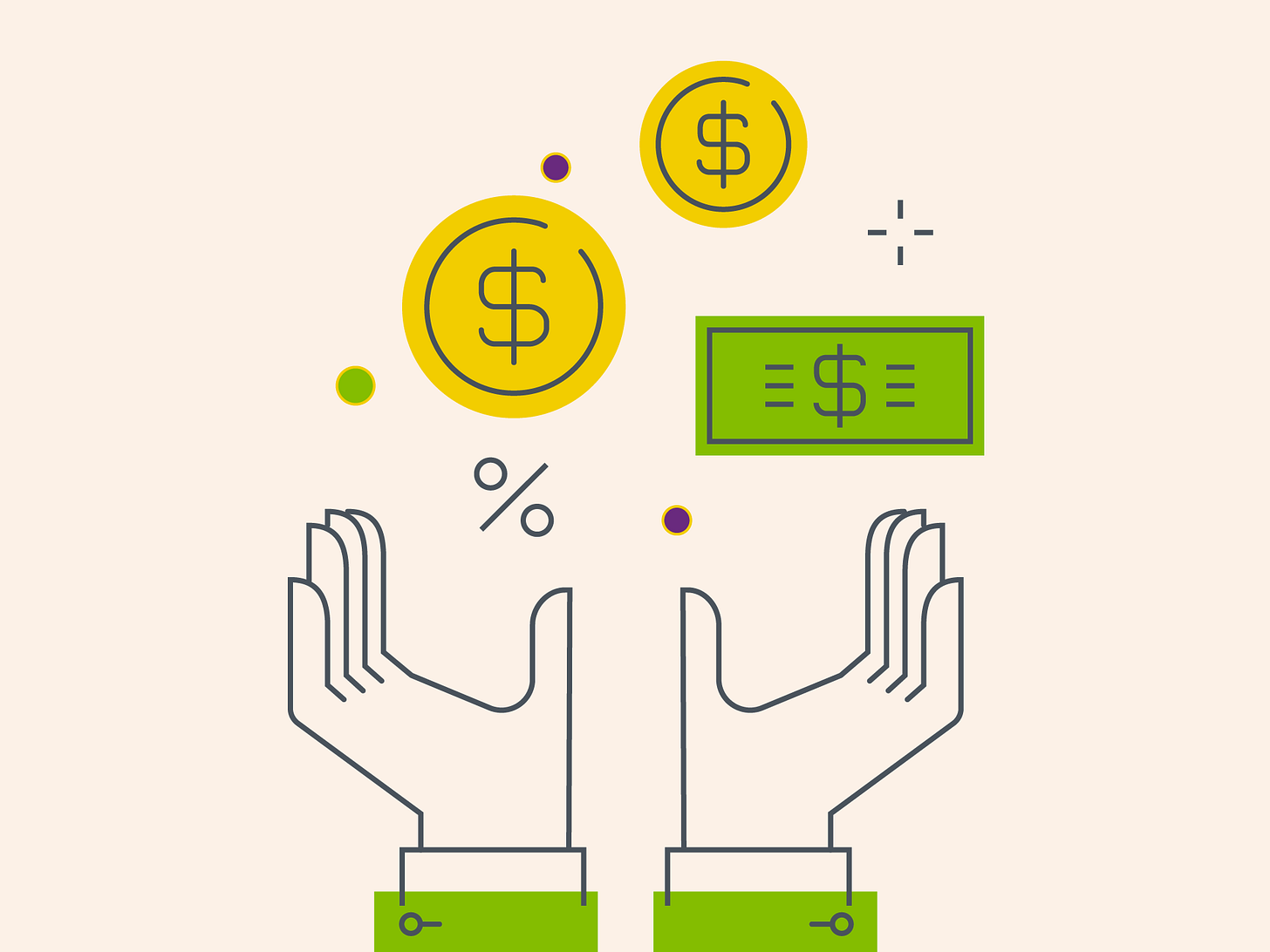
Ola and Uber, have been dominating the cab market for over a decade. They revolutionized the traditional taxi industry by offering a convenient and affordable ride-hailing service through their mobile app, changing how people travel in India. Ola and Uber leveraged the network effect and created an ecosystem of riders and drivers, leading to faster response times and capitalising on the growth of digital India. This has led to a significant transformation in the cab or taxi business in India.
The Ola Story
Ola was once viewed as a symbol of India's booming startup ecosystem and became the preferred mode of transportation for millions of Indian commuters because of its affordability and ease of use. Ola is a platform-based business that operates as a ride-hailing service, connecting customers with drivers through a mobile app. Ola does not own any cabs but acts as a marketplace that allows cab owners and drivers to connect with customers. Ola is more of a technology company than a taxi company, as its business model revolves around creating a seamless digital platform that enables efficient and convenient ride-hailing services. This makes it an asset-light model and has high scalability. There are four major phases in Ola's story. We will look at each phase and how each phase influenced the company.
Phase 1: Blitzscaling
Blitzscaling is an approach in which businesses prioritise speed over efficiency to achieve quick growth and market share. Ola's early emphasis on customer acquisition through low-priced rides and driver incentives is an example of blitzscaling. This strategy can be especially effective in businesses with network effects, where the value of a product or service grows as more people use it. In the case of Ola, the company's early emphasis on blitzscaling enabled it to swiftly gain a huge customer and driver base, resulting in a network effect: as more drivers joined the platform owing to the massive incentives, making it easier for commuters to find a ride, which in turn attracted more commuters to use the platform relative to its competition.

In this phase, Ola drivers were earning between 70,000 and 80,000 rupees per month, while customers were getting rides for as little as between 6 to 15 rupees per kilometre. This strategy, however, came at a cost, as Ola was burning through cash to offer such low fares and high incentives to drivers, incurring huge losses. Despite the cash burn, Ola grew its daily ride count from 200 in 2012 to over 150,000 by the end of 2014, commanding a 60% market share by 2014. This became possible as Ola was quick to raise funding and provide such incentives and affordable rides.
Phase 2: Building Trust
The second phase of Ola's growth is the trust-building phase, where consumers saw Ola as a reliable and affordable way to travel. Ola introduced features such as the Ola Pass, driver and customer rating systems, and improved safety measures to ensure a secure experience. Drivers started to view it as a trusted source of income. This led to an influx of drivers, including those from other blue-collar professions, who took a bank loan to buy a car and joined Ola as a driver partner, and hence Ola was able to increase its market share and strengthen its reputation as a trustworthy ride-sharing platform.
Phase 3: Dependence on Ola
Ola's network effect took hold during the third phase of its growth, and consumers increasingly relied on Ola for their everyday travel needs. Consumers even began substituting car ownership with Ola, which was becoming more reliable, economical, and convenient with fewer hassles associated with car ownership, such as insurance, repair and maintenance, parking, and driving in traffic.
Ola drivers, on the other hand, drove for the platform because they needed to pay off their car loans and depended on Ola for a consistent income. At this point, Ola's attention switched to boosting dependability and service quality, offering features such as 24/7 customer support, SOS buttons, and in-app wallets. In addition, the firm expanded its operations to new locations, consolidating its position as India's leading ride-hailing platform. During this period, Ola established itself as a dependable ride-sharing platform in India.
Phase 4: Profitability Push
In phase four, Ola's primary objective is to achieve profitability, which is attained by reducing driver incentives and raising ticket prices for users. Ola reduced driver incentives by up to 60%; this meant that drivers who previously earned around 60,000 to 70,000 rupees per month were now only making around 30,000 to 35,000 rupees per month. Additionally, the drivers had to pay their EMI, and the increasing fuel prices added to their financial burden. As the pandemic struck, many drivers lost their savings and failed to keep up with their EMI payments, resulting in banks seizing their vehicles. Close to 30,000 cabs were seized by banks during the second half of 2020. Many drivers returned to their villages in search of work during the lockdown, resulting in a shortage of cars on the platform, thus increasing wait times, increasing cancellations, and decreasing reliability for regular commuters. For instance, the number of cabs in Bengaluru alone reduced from around 1 Lakh to only about 30,000 cabs.

Ola intensified the plight of regular commuters by charging a premium. Ola had implemented surcharge pricing, in which the company charges a higher rate for rides during periods of high demand or adverse weather. This is done to encourage more drivers to get online during these times and pick up riders, balancing the supply and demand ratio. Many customers were outraged when surcharge pricing was implemented since it increased the cost of rides on the platform. This scenario made car ownership more cost-effective and reliable for regular commuters.
Despite Ola achieving its profitability objective in FY21 (Operating Profit), Ola's reputation suffered a setback. The sentiment towards Ola had changed from both the consumer standpoint and driver perspective, making it less appealing as a reliable partner for commuters and drivers.
The Challenges Faced by Ola
The Airbnb Model didn’t work: Ola adopted an Airbnb approach, positioning their customer as the driver and the driver’s customer as the rider. The riders are the primary customers in ride-hailing as they pay for the service, and it is essential to prioritize their satisfaction. Treating the driver as the primary customer can lead to neglecting the rider's experience, leading to a drop in customer satisfaction. Also, a bad experience in an Airbnb only affected the review of that place, whereas a bad experience in an Ola cab affected the Ola brand image.
Quality of Service: Ola had limited control over the quality of its cars and drivers in the platform, resulting in inconsistencies in service. The company also struggled to maintain reliable customer support and address driver cancellations, leading to a decline in customer satisfaction. As a result, customers were often left frustrated and unsatisfied with the service.
Low Driver Retention: Ola is a tech company that operates as a cab aggregator making it an asset-light model but this shifted the car ownership burden onto the drivers, leading to overworked drivers struggling to fulfill their EMI payments. This model was not driver-centric, and the reduced incentives for drivers further contributed to the poor retention rate. Drivers had to also bear the expenses of rising fuel prices and maintenance, which further led to poor driver retention rates.
COVID-19: During the Covid-19 pandemic, the demand for ride-hailing services decreased dramatically, causing a significant loss in revenue for Ola. This led to a reduction in driver incentives. As many drivers could not keep up with their car EMIs, banks seized their vehicles, resulting in a shortage of cars on the platform. Additionally, the pandemic resulted in a shift towards personal car ownership, as people were hesitant to share rides with strangers due to safety concerns. This further reduced the demand for ride-hailing services.
Leadership Changes: Ola has witnessed several top executives leaving the company, including its Chief Operating Officer, Chief Financial Officer, Chief Marketing Officer, and Co-Founder. These departures have been attributed to various reasons, including management issues, internal conflicts, and strategic disagreements. The frequent leadership changes have raised concerns about the company's stability and future prospects.
Too many diversifications: Ola ventured into multiple business verticals, such as food delivery (Food Panda) and financial services (Ola Money), Ola Cars (used car market), Ola Dash (quick commerce platform), Ola Play and self-drive car rentals, in an attempt to diversify its revenue streams and expand its offerings. However, this move proved to be a drain on the company's resources and most of these companies later shut down operations as they struggled to compete with already well-established players in their segment.
Economics of car ownership: Car ownership became a cheaper and more preferred option for consumers. They could own and use their cars at their convenience without worrying about wait times or driver cancellations. And if a consumer already owns a car, the consumer can employ a driver for a mere ₹15,000 to ₹18,000 which is still a more convenient and cost-effective option than a regular Ola ride.
In conclusion, there is no doubt that Ola and Uber have transformed traditional ways of commuting and are great businesses. The industry dynamics are constantly changing, and Ola's experience, popularity and market share give it an advantage over other players. However, Ola struggled to generate a profit until FY 21 (Ola reported a ₹90 Cr Operating Profit in FY21).
But just as Ola's fortunes begin to change, a new challenger has emerged and has gained market traction with its innovative approach to ride-hailing. It recently partnered with two of India's biggest businesses, Tata and Reliance. This begs the question, What is this company and what is so unique that Tata and Ambani have backed them to take on the duopoly of Ola and Uber? As a consumer, it is exciting to watch the evolution of ride-hailing services and see how they continue to shape the way we travel.
Click below to learn more about this innovative solution.






Interesting read with adept research. Keep up the good work 👍
Looking forward to reading more such insightful articles.
Well written and well explained, making every point easily understandable..🔥🔥🔥